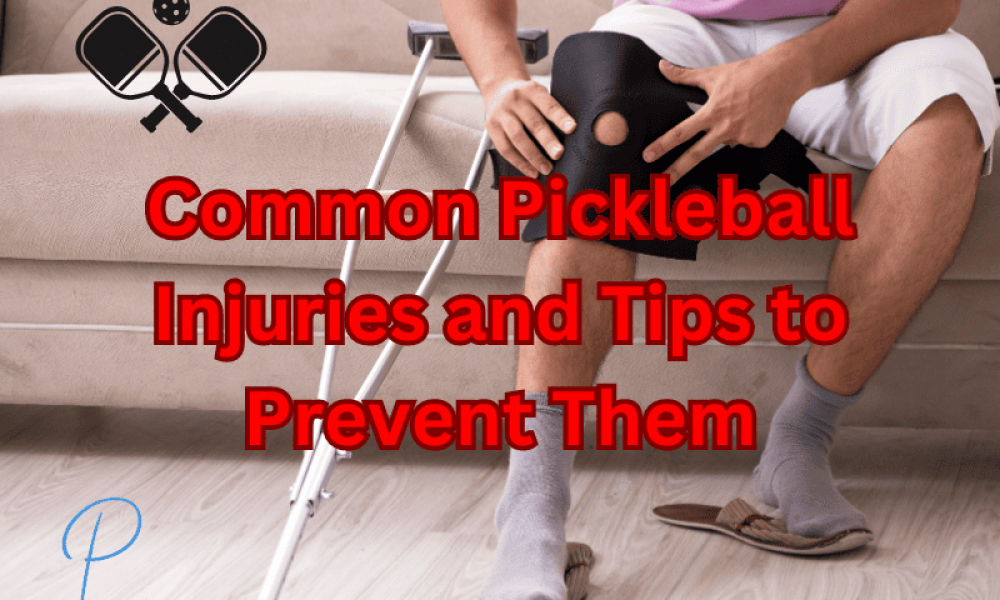Pickleball has an incredible way of captivating our hearts and pushing our bodies to new heights. The rush of adrenaline, the cheers of the crowd, and the feeling of accomplishment after a well-executed point – these are the moments that make pickleball truly special.
However, amidst all the excitement, there is a lurking danger: pickleball injuries.
Pickleball is a sport that beautifully blends the finesse of tennis, the camaraderie of badminton, and the sheer fun of ping pong. When step onto the pickleball court, it’s like being welcomed into a delightful symphony of quick footwork, precise shots, and spirited banter among players. It’s truly a dance, where every move matters and every shot calls for precision.
Yet, in this dance, there is also the risk of an unfortunate twist or sprain. One wrong move can quickly turn the joy of the game into a painful setback. And we don’t want anything to keep us off the court!
Therefore, it is important to approach pickleball with caution and prioritize safety, allowing you to fully enjoy the thrill of this game we love while minimizing the risk of potential injuries.
In this blog post we will talk about the common pickleball injuries and some tips to help prevent them so you can stay on the court!
Let’s get started.
The content provided in this blog post, including the warm-up exercises and injury prevention tips related to pickleball, is intended for informational purposes only. I am not a medical professional, certified personal trainer, or an expert in the field of sports medicine. The suggestions and recommendations shared should not be taken as medical advice or a substitute for professional guidance. It is crucial to consult with a qualified healthcare or fitness professional before embarking on any new exercise routine or if you have any concerns regarding injuries or health conditions. Your safety and well-being should always be a priority.
Common Pickleball Injuries & Tips to Keep You in the Game
Pickleball is fun and engaging and is also the fastest-growing sport in America.
However, like any physical activity, it carries the risk of injuries, especially if proper precautions are not taken. Being aware of the most common pickleball-related injuries can help players take preventive measures and enjoy the game safely.
Here are some of the types of injuries to watch out for:
1. Sprains and Strains
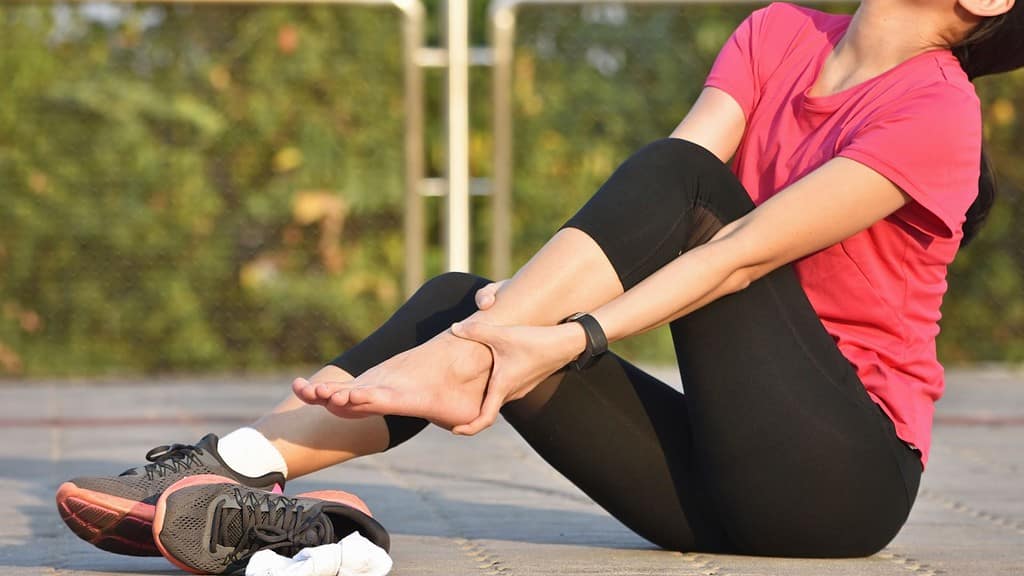
These are known to be the most common injuries in pickleball. These injuries occur when ligaments or muscles/tendons are stretched beyond their normal range.
Quick and abrupt movements, such as pivoting or changing direction, can lead to sprains, fractures, and strains in the ankles, knees, Achilles tendon, or wrists.
How to Prevent Them
Engaging in a proper warm-up routine that includes dynamic stretching can help prepare the muscles and joints for the demands of the game. Additionally, wearing supportive, pickleball footwear and using stability-focused exercises can minimize the risk of sprains.
2. Tennis Elbow (Epicondylitis)
Tennis elbow, or lateral epicondylitis, is a common overuse injury among pickleball players.
It is characterized by inflammation and pain in the tendons on the outer part of the elbow. The repetitive arm motion involved in hitting the ball with a paddle can injure the tendons, leading to this condition.
How to Prevent Them
To prevent tennis elbow, players should focus on proper paddle grip and technique. Avoid using a grip that is too tight and consider using paddles with shock-absorbing features.
Strengthening the forearm muscles and incorporating rest days into the playing schedule can also help prevent this injury.
3. Knee Injuries
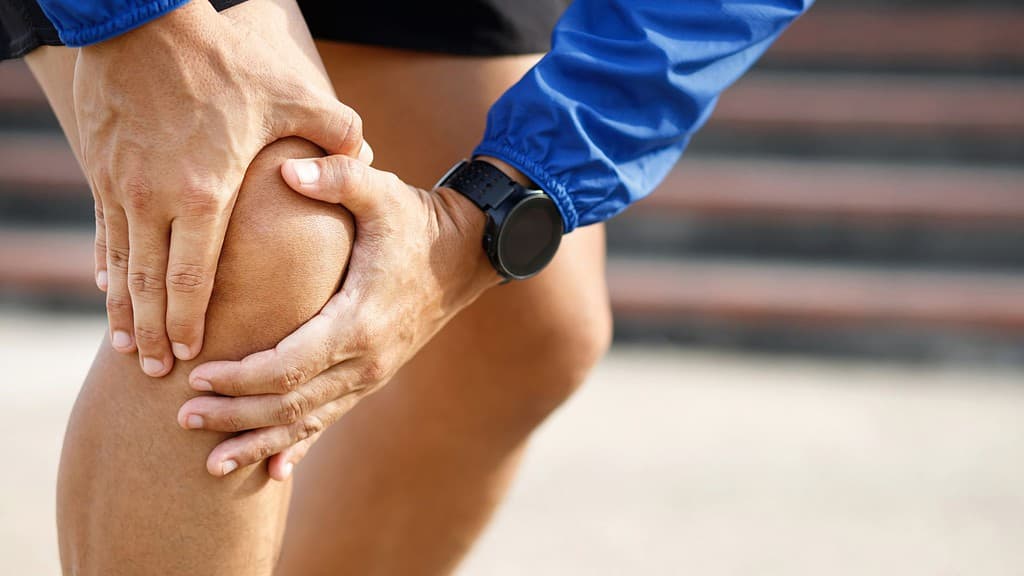
Common knee injuries, such as meniscus tears and patellar tendinitis, can occur due to the quick lateral movements and constant bending involved in pickleball. The impact of sudden stops and starts can put stress on the knees, leading to various injuries.
How to Prevent Them
Incorporating knee-strengthening exercises into your fitness routine can help improve the stability and support around the knees.
It is also essential to wear the right shoes that provide adequate cushioning and support. You can opt for court shoes as well.
4. Rotator Cuff Injuries
The rotator cuff consists of a group of muscles and tendons that stabilize the shoulder joint.
Overhead shots and repetitive swinging motions in pickleball can put stress on the rotator cuff, leading to injuries such as tendinitis or tears.
How to Prevent Them
Strengthening the muscles around the shoulder joint through targeted exercises can help prevent such injuries.
Moreover, the players should also focus on maintaining proper shoulder alignment and form during gameplay.
5. Ankle Injuries
Ankle sprains are common in sports with fast and agile movements, including pickleball. The quick changes in direction and pivoting can lead to accidental twisting of the ankle, causing sprains and even other Achilles tendon injuries.
How to Prevent Them
You can prevent pickleball injuries by strengthening the muscles around the ankle joint and wearing supportive, properly fitting footwear like court shoes. Ankle braces can also offer added support and stability.
Exercises and Stretches for Pickleball Players to Prevent Injuries
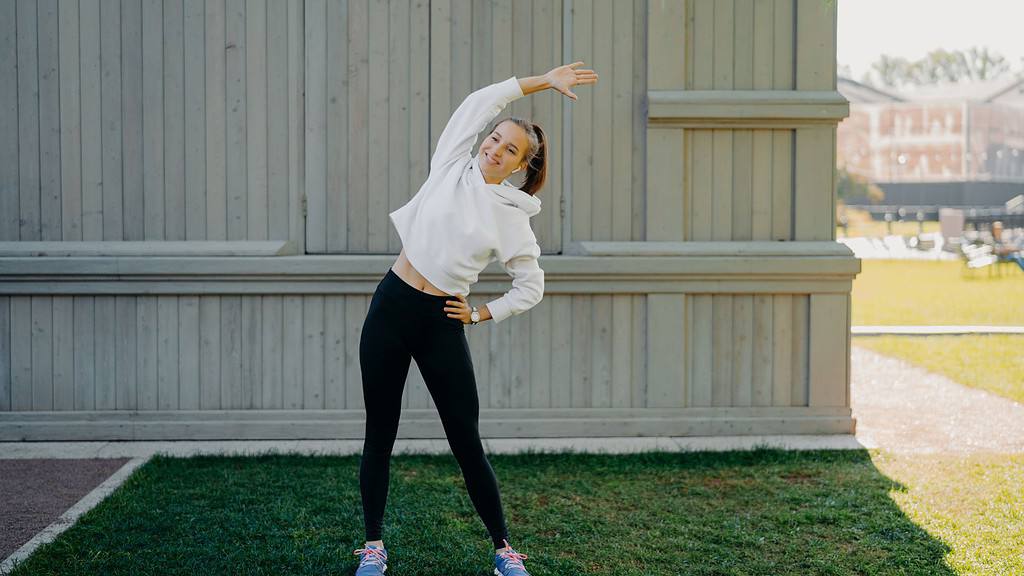
If you want to rock the court like a champ and keep those mishaps at bay, it’s time to limber up and stay in the game! Here are some exercises and stretches that help prevent injuries and keep you flexible and safe during pickleball play:
1. Dynamic Warm-up
Before starting any activity, warm up properly with dynamic movements to increase blood flow and prepare your muscles for action. Try a dynamic warm-up routine that includes:
- Arm circles
- Legg swings (front-to-back and side-to-side)
- Hip circles
- High knees
- Butt kicks
2. Shoulder Rotations
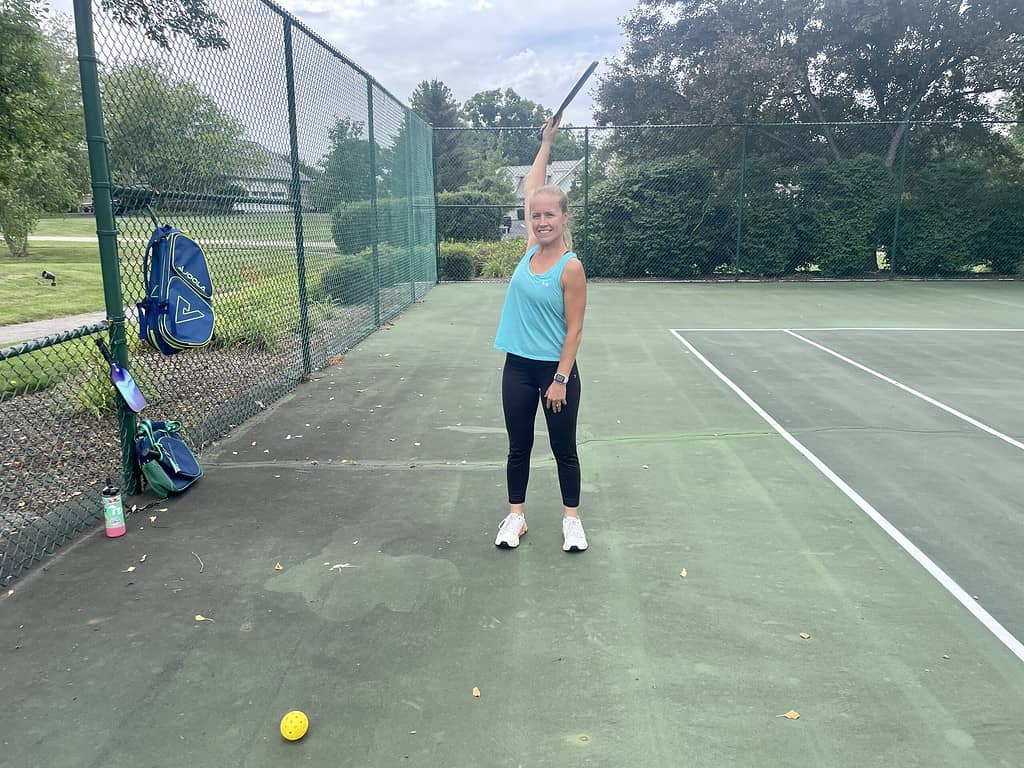
Pickleball involves a lot of shoulder movements, so it’s essential to keep this area flexible and mobile. Perform shoulder rotations to warm up and increase the range of motion to avoid shoulder injuries.
- Stand with feet shoulder-width apart.
- Extend your arms out to the sides at shoulder height.
- Slowly rotate your arms in small circles, first forward and then backward.
- Gradually increase the size of the circles.
3. Hamstring Stretch
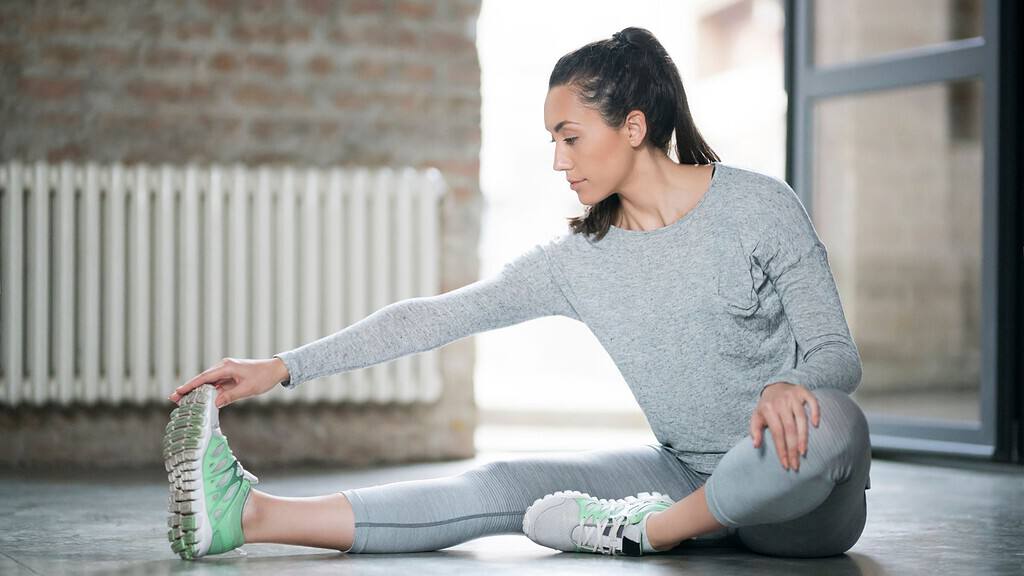
These are crucial for smooth movements and preventing injuries. Perform the following stretches:
- Sit on the ground with one leg extended straight out.
- Bend the other knee, placing the sole of your foot against your extended leg.
- Lean forward from your hips, reaching toward your extended foot.
- Hold the stretch for 20-30 seconds on each leg.
4. Hip Flexor Stretch
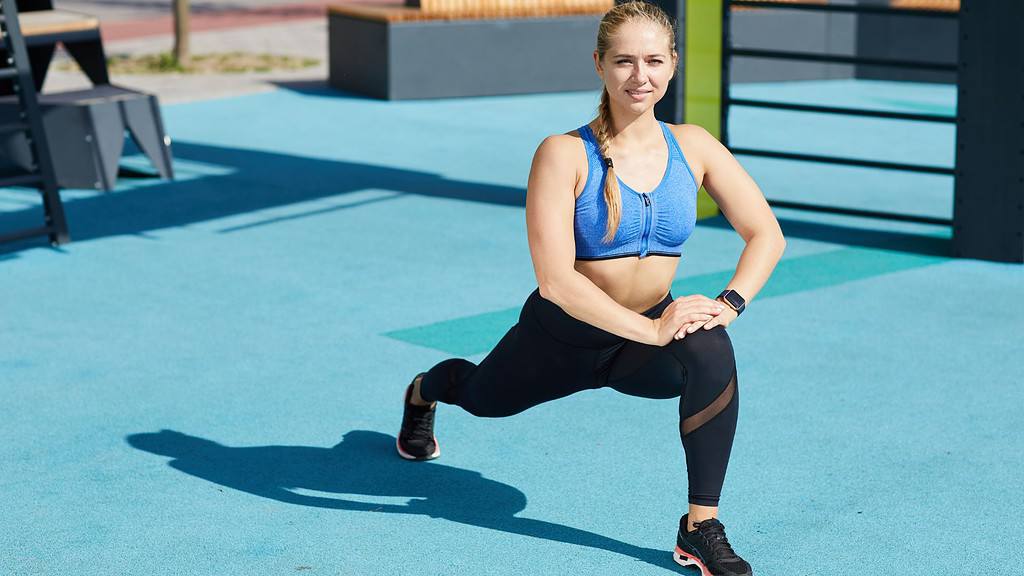
The game of pickleball requires quick lateral movements, which can put stress on the hip flexors. So, stretching them regularly can improve your balance and injuries:
- Kneel on your right knee with your left foot in front, forming a 90-degree angle with your left knee.
- Shift your weight forward slightly while keeping your back straight.
- You should feel a stretch in the front of your right hip.
- Hold the stretch for 20-30 seconds on each side.
5. Ankle Circles
Maintaining good ankle mobility is essential for quick changes in direction. Perform ankle circles to keep your ankles flexible:
- Sit on a chair or the ground with one leg extended.
- Rotate your ankle in circles, first clockwise and then counterclockwise.
- Perform 10-15 circles in each direction on each ankle.
6. Core Strengthening Exercises
A strong core provides stability and balance during pickleball movements. You should include exercises like planks, Russian twists, and bicycle crunches into your routine to strengthen your core muscles.
Sports Medicine and Pickleball: Importance of Rest and Recovery
Too many people brush aside the importance of rest and recovery. It’s not just for the pros; it’s for everyone who loves pickleball and wants to stay injury-free.
After an intense pickleball game, taking a break is like hitting the reset button. It lets your muscles and joints recover and keeps you in the game for the long run. So, next time you feel tired, listen to your body and give it the rest it deserves!
Tips for Proper Post-Game Recovery to Prevent Overuse Injuries
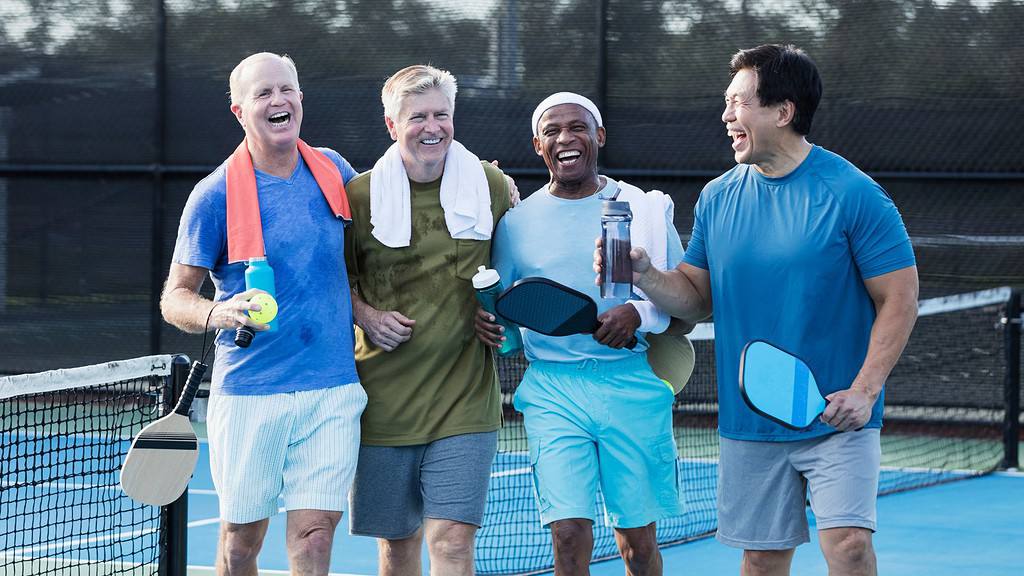
After a thrilling game, pamper yourself with some post-game self-care rituals. Here are easy tips for a speedy recovery:
- Cool Down with Care: Do gentle stretches after the game to relax your muscles.
- Stay Hydrated: Drink water like it’s your secret potion to prevent cramps and fatigue. Invest in a good water bottle if you have to!
- Foam Roller Love: Give yourself a mini massage with a foam roller to ease muscle soreness.
- Get Some Sleep: Don’t underestimate the power of sleep! Prepare your body for the game by getting restful sleep which helps your body heal and recharge.
Handling Common Injuries in Pickleball: Injury Management and First Aid
Mishaps and sports-related injuries are quite common, but don’t worry! Here’s what you need to do if you get injured while playing the game:
Steps to Take if an Injury Occurs During Play
- Stop the game and check the injury.
- Remember RICE: Rest, Ice, Compression, Elevation.
- Take it easy and let your body heal.
Importance of Seeking Professional Medical Advice
When in doubt, ask the experts! If an injury doesn’t feel right, don’t hesitate to get medical advice from a physical therapist or your GP. Schedule an appointment promptly. They’ll know how to help you get back to your pickleball fun!
Listen to Your Body: Your Best Pickleball Guide
Paying Attention to Signs of Fatigue or Discomfort
Whenever you are playing any sport, your body communicates with you through signals like feeling tired, sore, or uncomfortable.
These signs are essential to acknowledge because they tell you when it’s time to take a break and give your body the rest it needs. Ignoring these signals could lead to overexertion and potential injuries.
Taking Breaks and Modifying Your Play Style
Pickleball is an exciting game, and it’s easy to get caught up in the fun. But remember, it’s okay to take it slow sometimes.
Pace yourself during matches and adjust your play style when needed. If you feel fatigued or notice discomfort, don’t hesitate to dial it back a bit. Taking breaks and modifying your play style helps you avoid burnout and keeps you on the court longer.
Play Pickleball Safely: Additional Tips to Avoid Pickleball Injuries
Finally, it is important to remember that prevention is more effective than treatment. Therefore, by adhering to proper injury prevention techniques, you can ensure your safety while playing pickleball
Below are some additional pickleball injury prevention tips for your safety:
- Effective communication – It’s a team sport, even in casual play. Communicate with your fellow players to avoid unnecessary collisions or mishaps. Simple things like calling out shots and being polite go a long way in keeping things safe and fun.
- Avoiding overexertion and impulsivity – While pickleball is a blast, safety should always be a priority. Avoid risky moves that could lead to injuries. Know your limits and play within them.
- Potential danger on the court – Check the court properly before playing and keep an eye out for hazards like slippery spots or obstacles. If you spot any, report them immediately to court management or staff.
- Maintaining focus – Staying focused during the game helps you avoid accidents and make better decisions on the court. Keep your mind in the game, and you’ll be better equipped to prevent injuries and perform at your best.

